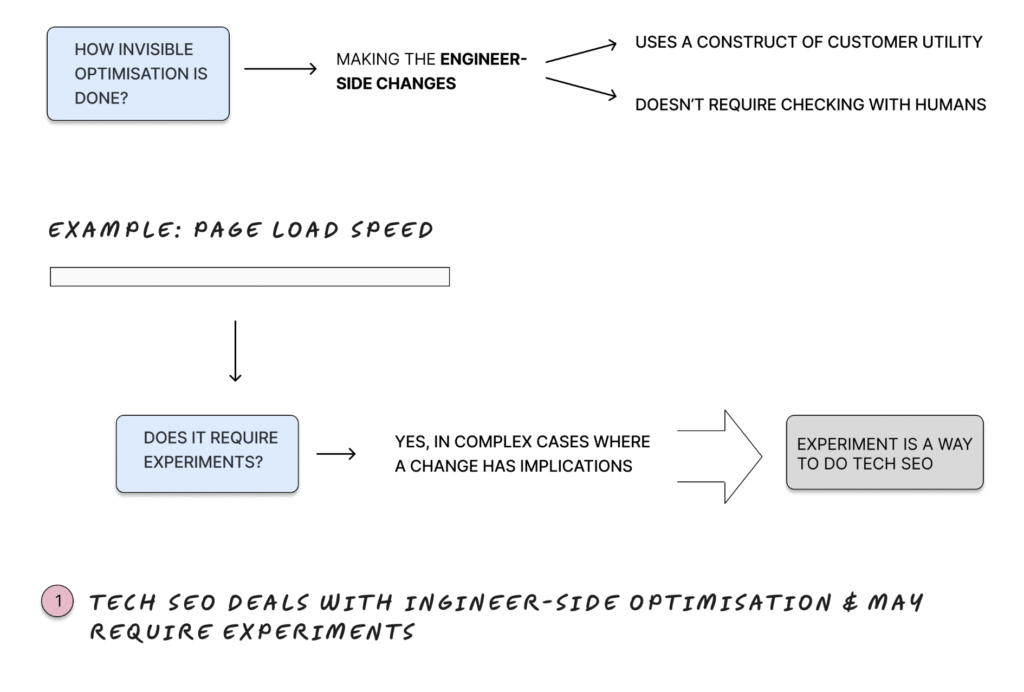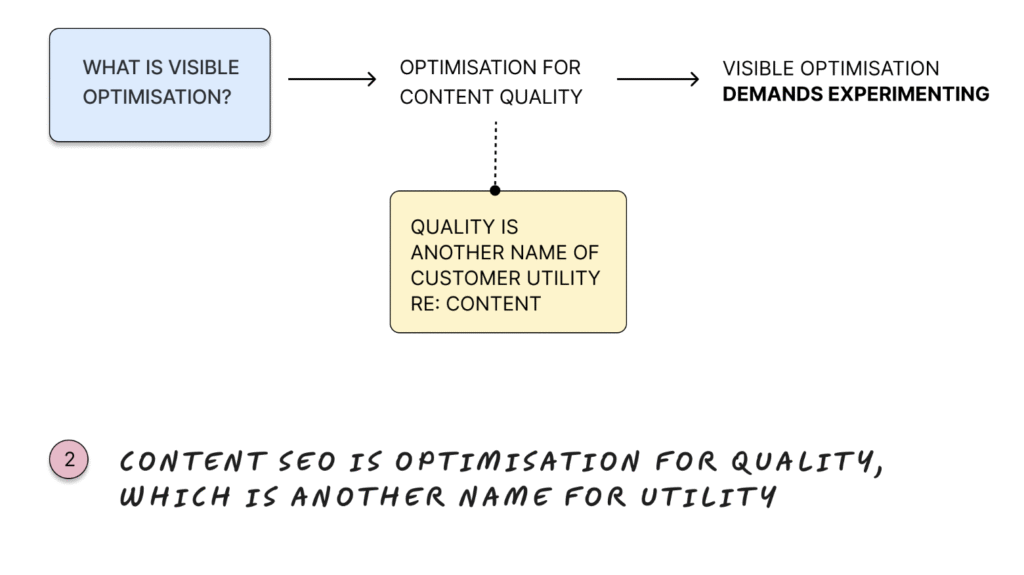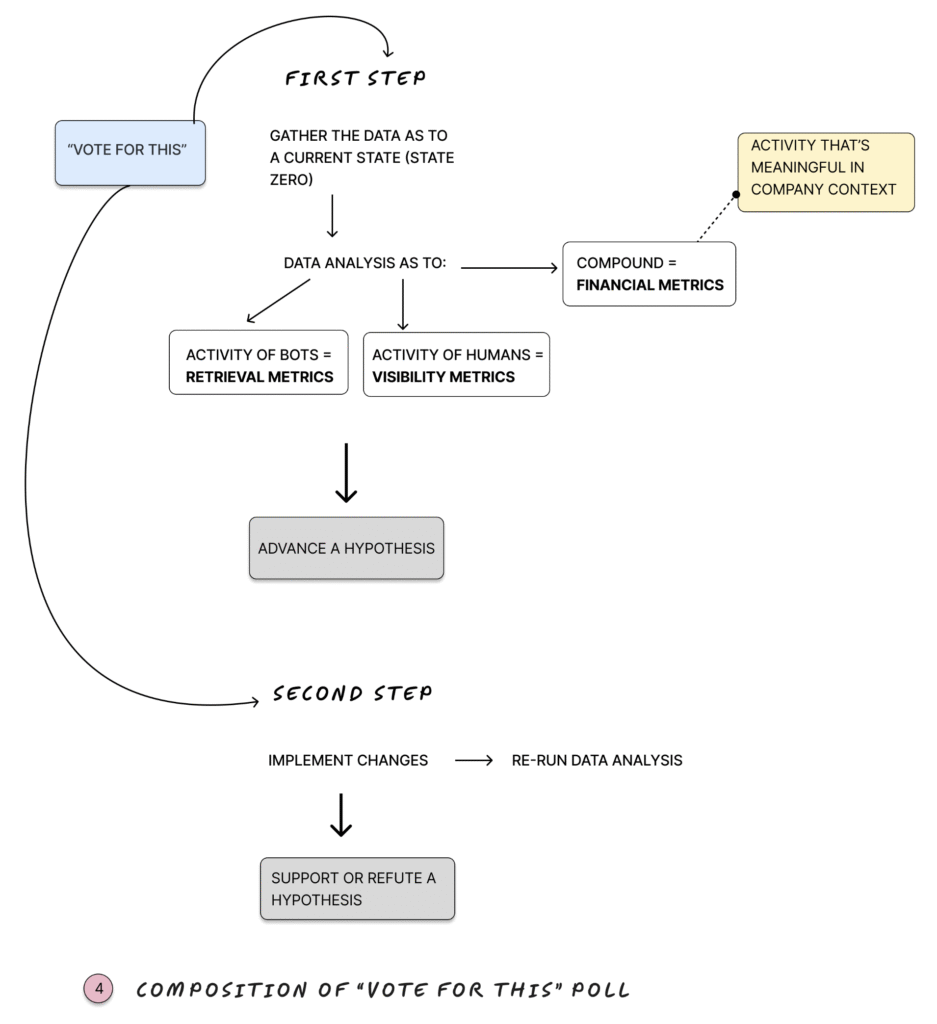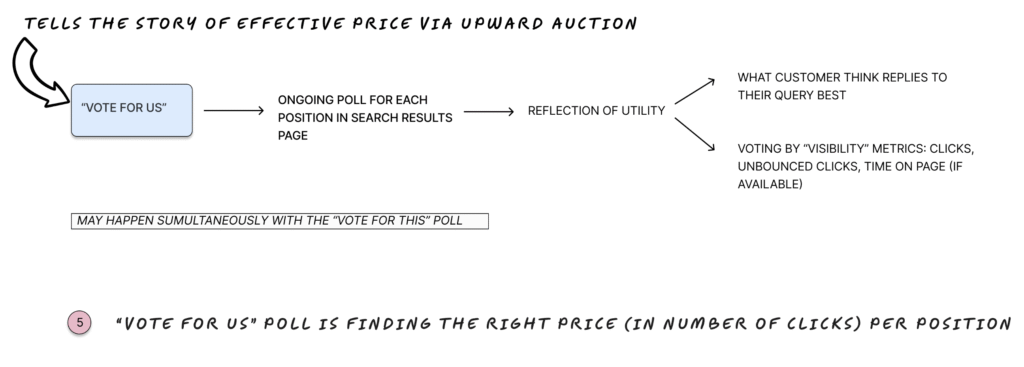Hello, my friends. My name is Bohdan. Let’s jump to lesson number five that’s dedicated to discussion of two levels of optimisation in SEO and, overall, the question of what is the method of SEO.
Like always, before starting on the new lesson, let’s quickly recall what has been said in the previous one.
Recap of lesson 4
So the previous lesson called the types of data in SEO and this was to introduce the concept of SEO funnel.

This is a sequence of acquisition of data in SEO, which is long, successive and contains invisible and visible elements. Whereas invisible or related to activity of bots include crawl and indexing data, visible that are related to the activity of humans, includes the data produced from the interaction with a page in search results like ranking, search appearance and, finally, the conversion side, which is impressions, clicks, actual conversions and also the notion of search query.

So this lesson has introduced some of the important terms including: what is the URL or a page? We discussed that page is a pivot or point of reference for all the SEO-related data, invisible and visible, and we said that this is the best candidate for a reference point, whereas neither user, nor a search query can serve as a better reference point instead of URL. We also discussed division of funnel into bots- related or technical parts and user-related or a content part.
Invisible optimisation is done on the tech level
Here in lesson number five, we will continue developing on this topic, and now, jumping into the levels of optimization, let’s continue the discussion here. Let’s say that on the level of the part of the funnel that relates bots activity, we may think about invisible optimization or of ways to increase the customer utility that are invisible to humans, such as tweaking something up, changing the code, introducing engineer, technical side changes.

Such a thing may actually happen and under this condition, it might not interfere with all the visible types of optimization. And this is what we may call tech optimization or tech SEO, this is the term that you must have confronted previously.
Tech optimisation uses a construct of Customer Utility
Well, we know so far that technical improvements or technical optimization works with a construct of customer utility that doesn’t need to be visible,it doesn’t need to probe or acquire any type of data with the customers themself. It may just go by the requirements of Google instead.
And this construct of customer utility is a handy thing because it doesn’t need much data acquisition. It is comfortable to use and it works fine for most of the simple and even complex types of optimizations.
Example of optimisation towards a construct of customer utility
Let’s have an example of this construct of customer utility. For example, it is not hard to presume that if a page loads faster or if a page contains headers or titles, it might be more helpful to the customer than not. So it’s a thing that has been proven over practice time after time. It doesn’t need reassuring once again that this is how the construct looks.
Yet, making it such a construct or the part of a search engine without constantly checking up with reality is a dangerous thing because the construct is not real.
Does tech SEO need experimenting?
Okay, presume this is clear. The technical optimisation works with a construct of customer utility. What’s also important to understand is that sometimes it doesn’t need probing or doesn’t need experimenting. We can just take and do. You can take this recommendation from Google and accomplish it.
But in some cases, mostly, the complex cases, it needs to have experiments because it works as a system, it might touch upon other interconnected things being a system. So experiment is also a method to work with technical optimisation.
What is visible optimization?
What is the other part of optimization? Coming from the idea of this funnel that I suggested in the previous lesson, the other part of the optimization relates using produced data, and it also relates content.
So it is something that I will now call quality. The quality of content or quality in general. So, what does quality mean here? It means that the quality is an attribute of customer utility in relation to the content. So customer utility, more or less a general or philosophical term, but when it actually touches up on the content, we use a term “quality”.

So, Google and other search engines don’t contain explicit recommendations on the quality. So it’s more or less a grey zone, even though it has some quality sections in the evaluator guidelines or other non- official documents. It cannot tell you, optimiser, what is quality. Especially what is the quality in each particular case.
So from this, we come to the idea that optimisation for the content quality or optimization using this data can be produced by the customer themself requires experimenting. And the experiment is the method of SEO. It is not only a method to acquire knowledge in SEO as we discussed in the preceding lessons.
The concept of polls
And here I will introduce the important notion or idea of polls. “Polls” is something that I use to describe the idea of experiment, to illustrate it. So the customer has two options and two cards (happy or not). We set it up as a poll. So choose option one or choose option two. So, a concept of a poll or election (voting) will be used here in this course to give you the sense of the customer that’s been given several alternatives to successively to choose from. And this idea of the pole is a synonym of experiment.
2 kinds of polls in SEO
So, I say that we, as SEO specialists, work with the two kinds of polls.
First is a poll that I call “vote for this”. This is a poll that can have other name, i.e. “Do you like what you see?”. This is a poll we make some changes and introduce them to customers, say can you actually vote for this? Do you like this version more than the previous one? We are talking about the very same page, but in different states: state zero and state one.
So we collect the data pertaining to the state zero and compare it to the stage one. And by comparing this data we arrive at the conclusion whether or not the customer has actually voted for this or that type of page, for this or that option. So this first poll implies a choice.
Another type of a poll is “vote for us”. It’s when we go to a search engine and say, “Do you actually notice that our page has been preferred or has been continuously preferred by customers?” If so, don’t you want to grant us more visibility?
A detailed discussion of how the polls work
Let’s discuss in more detail how a poll works.
A” Vote for this” experiment. State zero

So, to be able to set up a pole or experiment, which is a method of SEO, we – as SEO specialists – come from state zero where we gather the data that relate:
- an invisible part of the data acquisition (activity of the bots).
- visible part of the funnel (click, impressions and other types of data) and we also append it with a
- more advanced type of data, say, financial data.
And this is how we create data analysis. So this is a long spreadsheet of data: we collect it, we analyse it and looking into it, we come up with a hypothesis.
Say, for example, this page will look better with this type of title. It relates to the faculty of advancing hypotheses. We’ll discuss later on what it takes to advance hypotheses? What data is necessary? What type of mechanics are involved here?
A” Vote for this” experiment. State one
But for now, we’ve arrived at this hypothesis and say, for example, let’s work with a snippet. Let’s choose this or that, and maybe it’ll please the customer. And we then make some changes and proceed to the state one. So this is where we once again record all the data connected to the invisible, visible and financial part of the funnel and compare it.
Hopefully, we get some positive affirmation, so more time with the page, more clicks, even more sales. Voila, this is how we run this first poll. And we can envisage in a way such that we propose a customer two cards, choose one of them and this is how he or she votes with clicks, engagement and so forth.
A” Vote for us” experiment
The second type of experiment may happen simultaneously with the first one, but on the logical level, we must distinguish between these ones and we must divide them in space and time.

So this type of experiment works like this. To have it done we need a different type of affirmation. This is something that Google calls NavBoost etc, i.e. more visibility, more clicks, more reassurance to the pages that perform better than the competitors’ ones on the same positions, given the same visibility levels.
So whereas in the first poll, we proposed to the customer the same page before and after changes, and said, “vote for this”. In the second one or “vote for us” poll we work with a competition, claiming: “See, we are now better than the competition in this place. We can earn more from this place. We could give more customer utility by occupying this place”.
This also can be called a poll, and this is how we become a preferred provider of utility over a specific spot.
Summary
Okay, let’s make a summary of the discussion here. So far we said that according to the structure of the SEO funnel, we’ve got the two levels of optimisation:
- one goes for technical things that might not be visible to customers, and
- Another is optimization for content quality, something that reflects utility and it absolutely must be visible to a customer.
So, tech optimisation might not require experimenting, with an exception of the complex cases where it can have numerous implications. In the case of content optimization facing the customer himself or herself – it absolutely requires experiment.
So it brings us to the idea that experiment, as such, is a method of a SEO is a way to produce knowledge and a way to get positive affirmation: just from search engines or customers alike.
In order to visualize the experimental activity we use the metaphor or idea of two types of polls.
The first poll is something that replies to a question: do you like what you see? Or calls: vote for this. This type of poll would make changes to a certain page within the scope of the experiment and ask: “what option of the page do you like more, you, a customer?”.
Then we get this data and go to other units of the company saying: “Hey, we’ve got some positive things. Let’s fix them!”.
Another type of poll is geared towards the search engine itself, and we say: “Hey, search engine, did you notice that over time we get stable results from customers that they actually like us more than any other provider of utility on this specific spot?”.
This is how we must get promoted or rewarded with more visibility and more clicks. Something that’s taken as a goal of SEO, whereas it’s just a mere reward or mere outcome of the rightly done SEO.
Postback from Lesson 20
Continuous improvement to the value stream is verified by direct and almost real-time feedback from customers. These improvements make things easier to use, better, faster and cheaper. Customers validate this by voting for what they find worthwhile paying for with their time and money. The feedback to the supporting system, for example, search engine ranking signals system is necessary in order to run better the entire value chain of search.

Leave a Reply